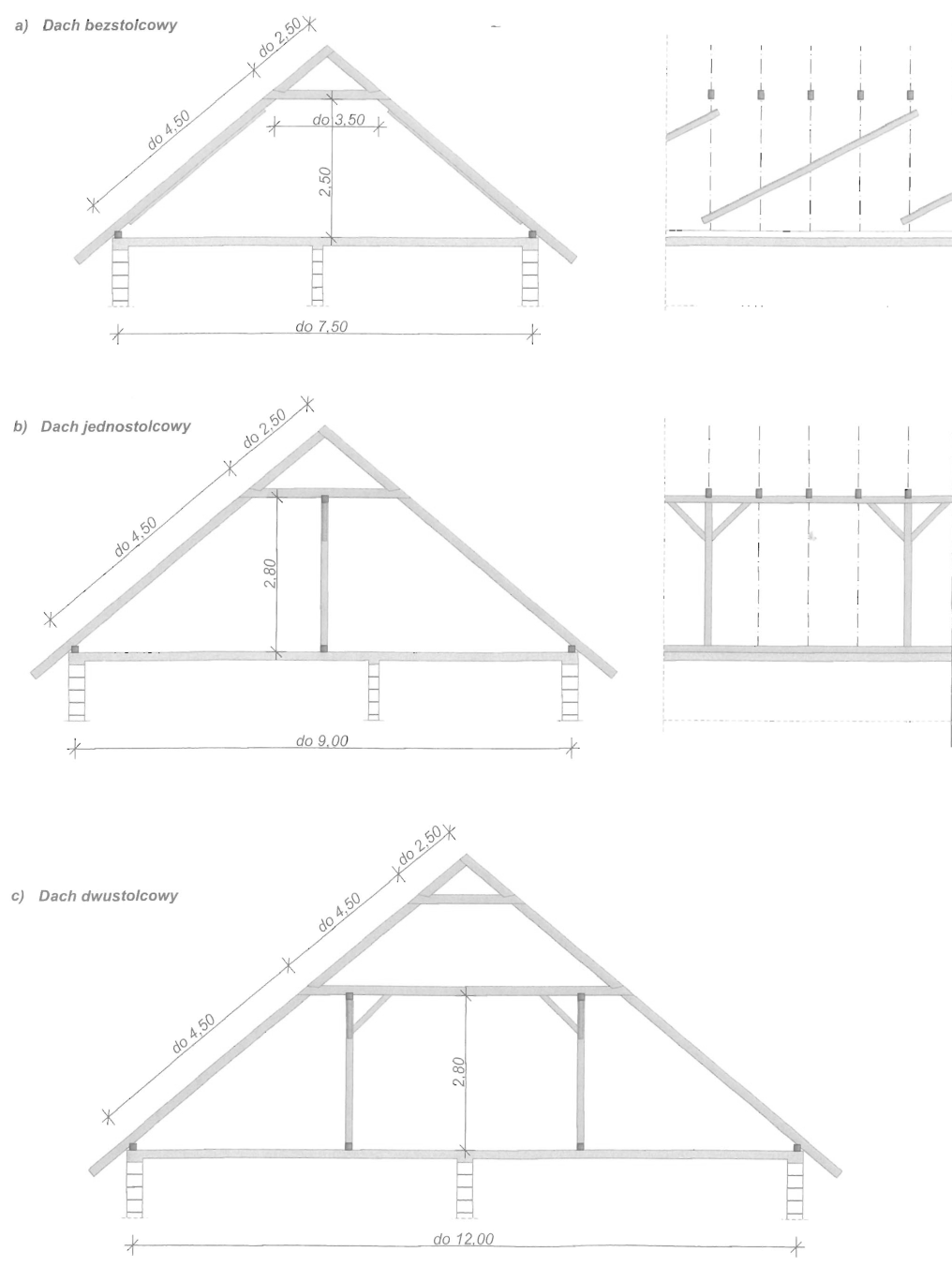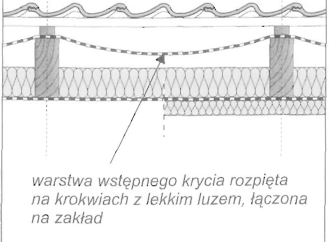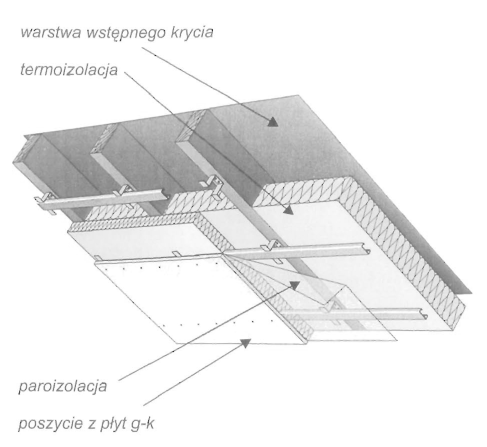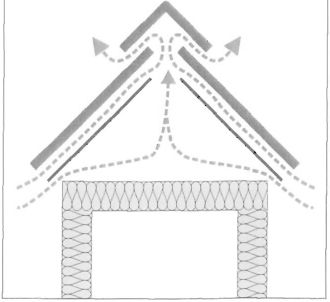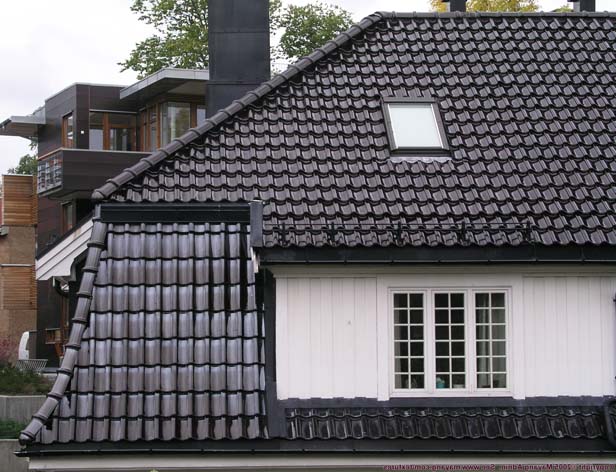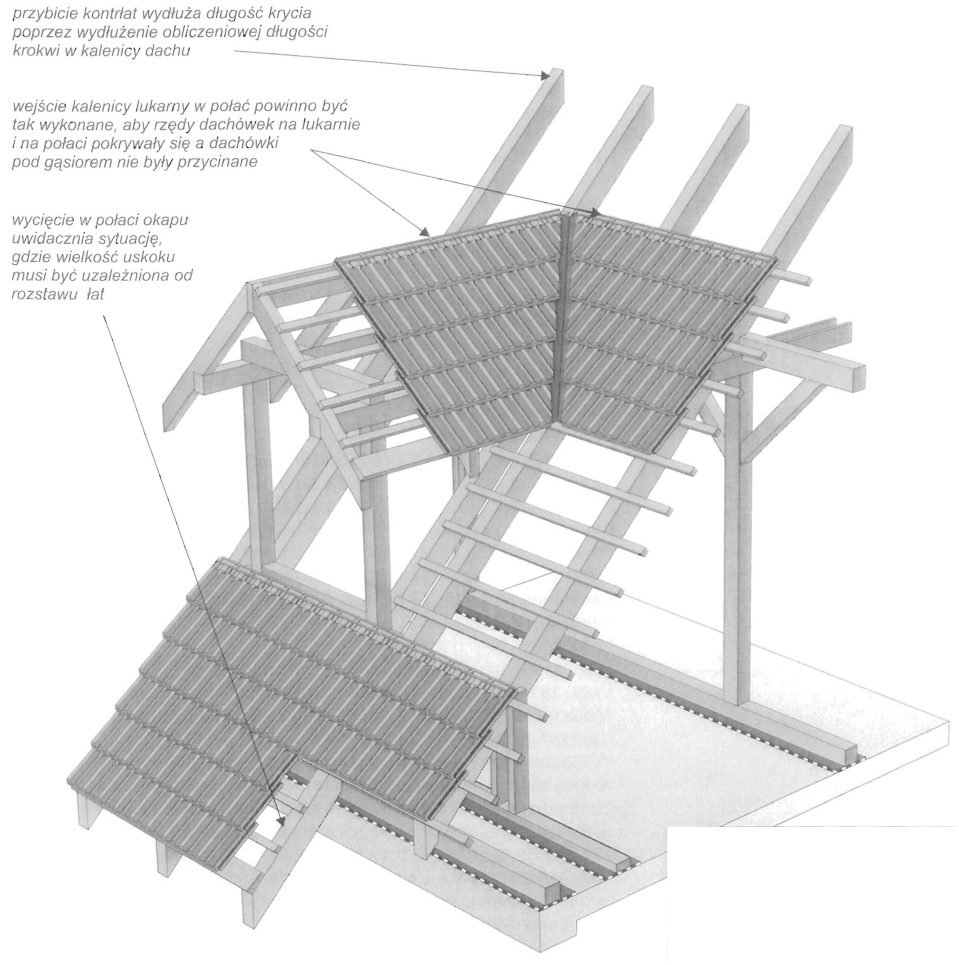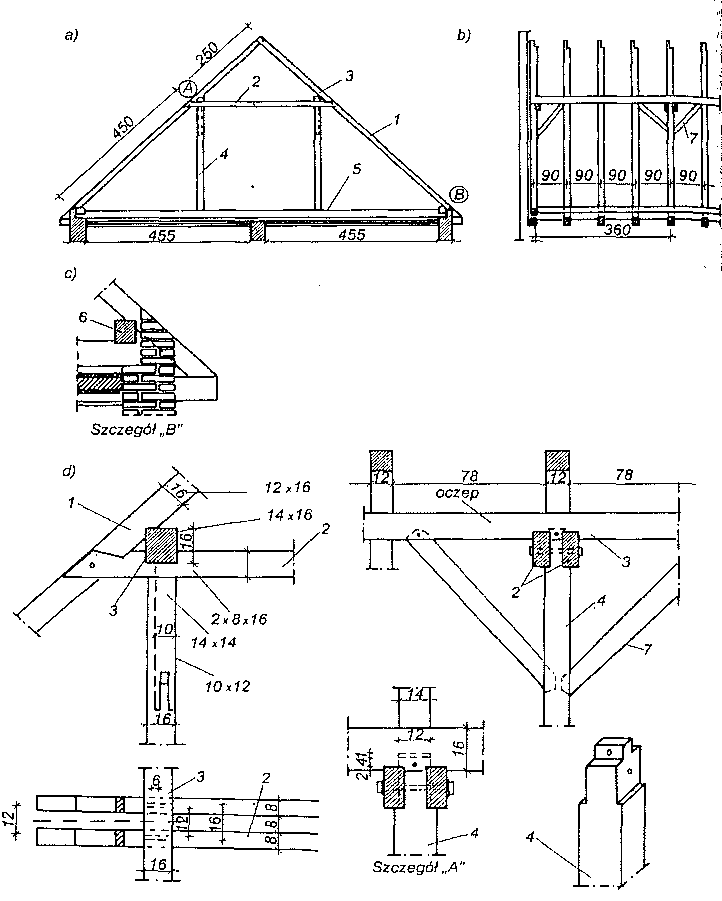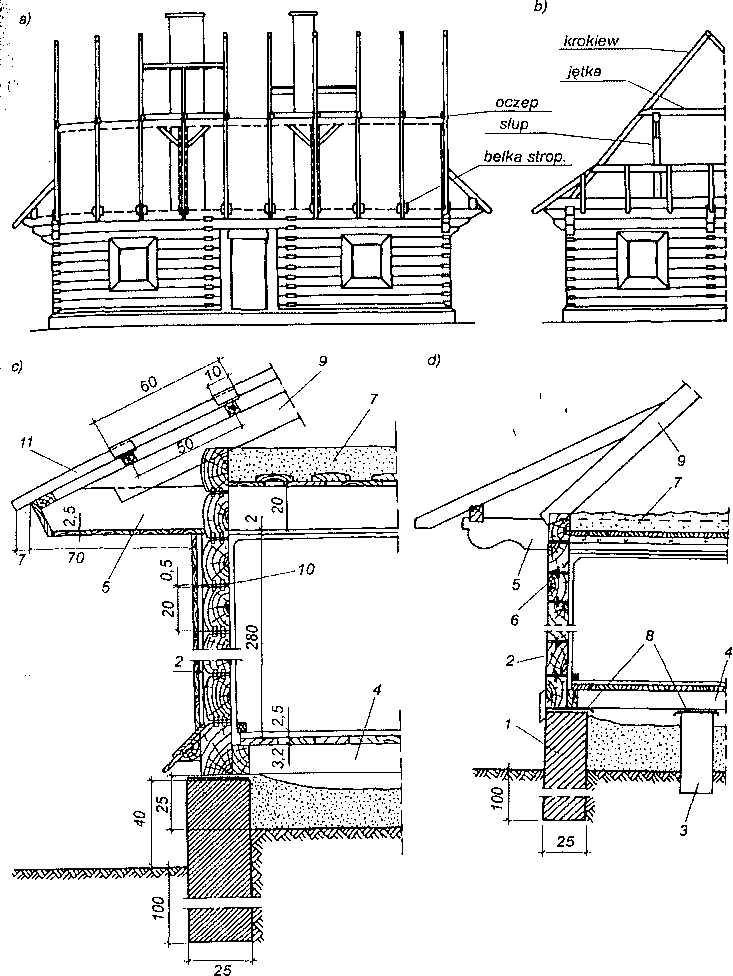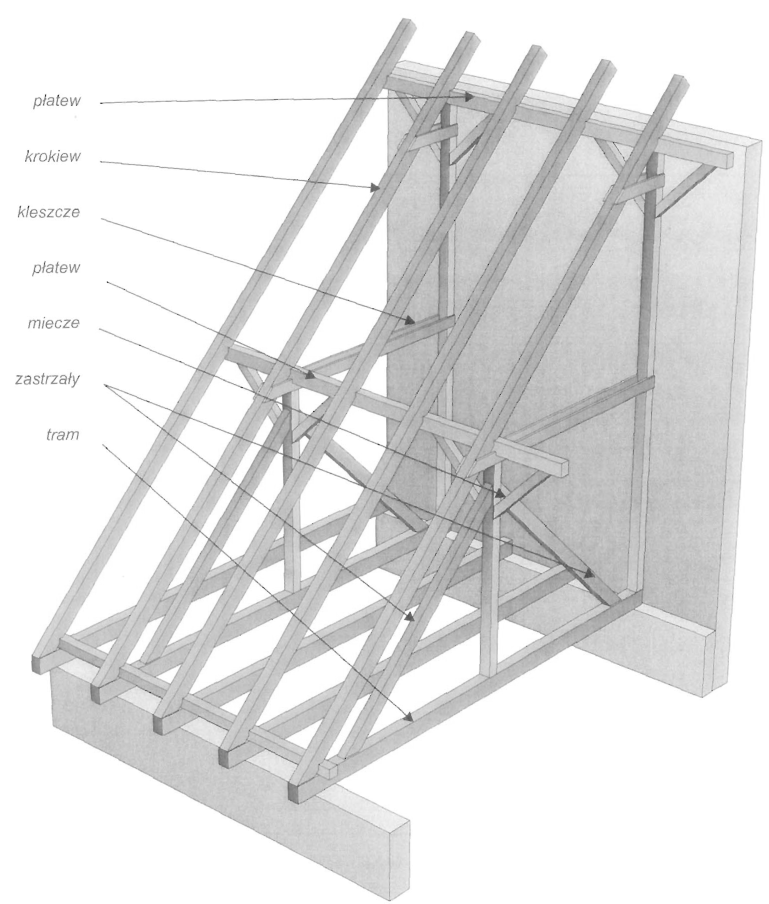Pochylenie krokwi dachowych zależy od rodzaju stosowanego materiału na pokrycie. Pokrycia z mniej szczelnych materiałów muszą mieć większe nachylenie. Zgodnie z PN-89B-0226 zalecane są następujące nachylenia połaci dachowej:
— dla pokrycia dachówką 22-51°,
— dla pokrycia blachą 3-51°,
— dla pokrycia papowego 3-27°.
Rodzaje wiązarów dachowych można podzielić na cztery grupy:
a) wiązary krokwiowo-belkowe i krokwiowo-jętkowe,
b) wiązary płatwiowe,
c) wiązary wieszarowe,
d) wiązary rozporowo-zastrzałowe.
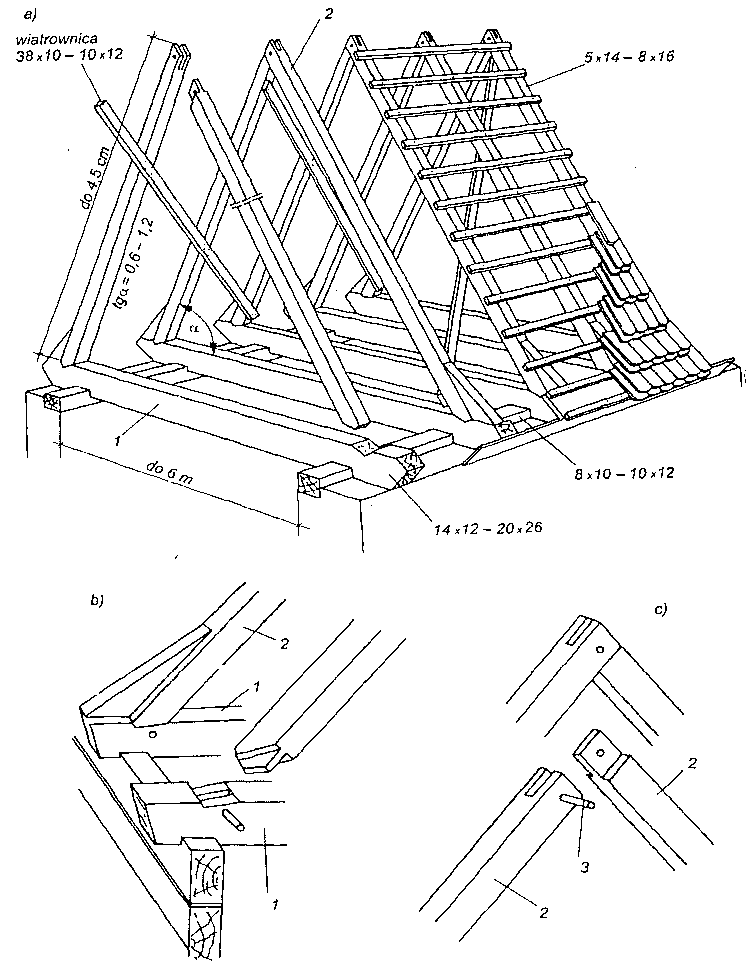 Więźba dachowa krokwiowo-belkowa: a) widok aksonometryczny, b) szczegół połączenia krokwi z belką stropową, c) szczegół połączenia krokwi w kalenicy; 1 – belka stropowa, 2 – krokiew, 3 – kołek.
Więźba dachowa krokwiowo-belkowa: a) widok aksonometryczny, b) szczegół połączenia krokwi z belką stropową, c) szczegół połączenia krokwi w kalenicy; 1 – belka stropowa, 2 – krokiew, 3 – kołek.
Dla małego rozstawu ścian — małej rozpiętości przekrycia, ok. 6 m — stosuje się ustroje belkowo-krokwiowe. Ustrój nośny stanowią trójkątne wiązary złożone z dwóch krokwi i belki. Dla większych rozstawów ścian, do ok. 9 0 m, stosuje się wiązary krokwiowo-belkowe z jętką niepodpartą. Jętkę umieszcza się nieco powyżej połowy długości krokwi.
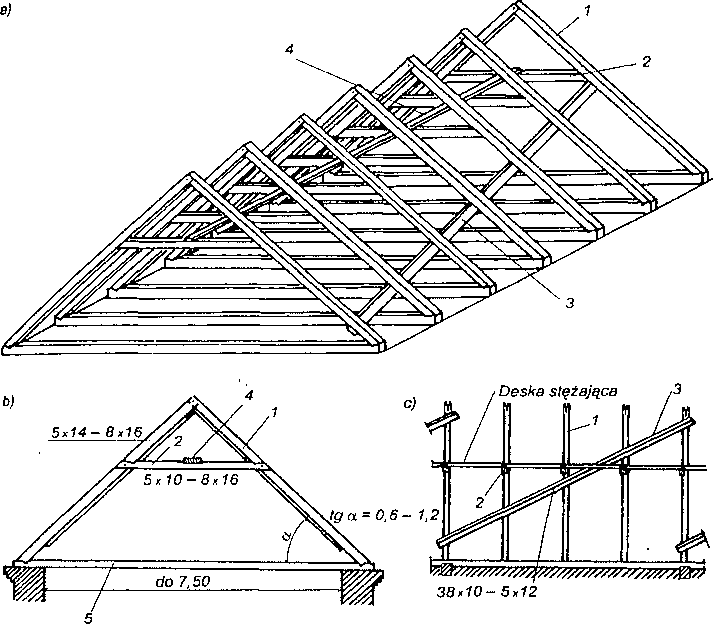 Wiązar krokwiowo-jętkowy: a) widok więźby dachowej, b) przekrój poprzeczny, c) przekrój podłużny; 1 — krokiew, 2 — jętka, 3 — wiatrownica, 4 — deska stężająca, 5 — belka stropowa.
Wiązar krokwiowo-jętkowy: a) widok więźby dachowej, b) przekrój poprzeczny, c) przekrój podłużny; 1 — krokiew, 2 — jętka, 3 — wiatrownica, 4 — deska stężająca, 5 — belka stropowa.
Na rysunku poniżej przedstawiono wiązar krokwiowo-belkowy z jętką podpartą stolcami (słupami). Jętka spoczywa na oczepie nasadzonym na czopy stolców rozstawionych w głównych wiązarach. Dodatkowo oczep jest połączony ze stolcami za pośrednictwem mieczy, dzięki czemu więźba dachowa jest usztywniona w kierunku podłużnym. Wysięg jętki poza stolec nie powinien być większy od ok. 80 cm.
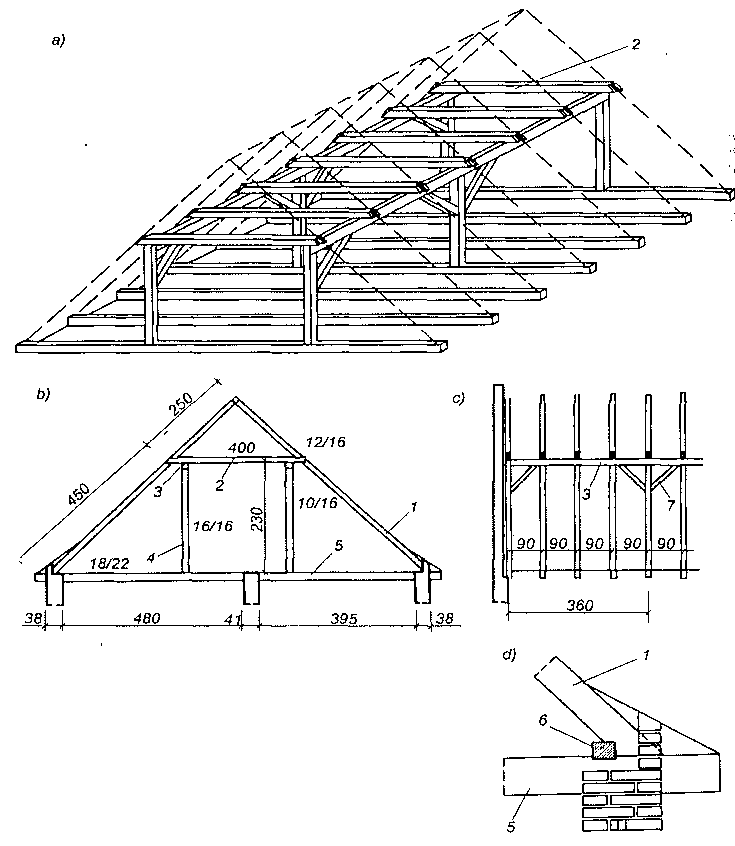
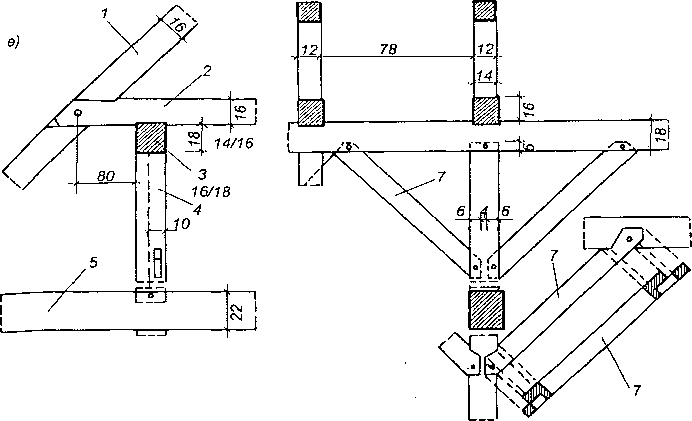 Dach dwuspadowy jętkowy: a) schemat dachu, b) przekrój poprzeczny, c) przekrój podłużny, d) szczegół oparcia krokwi na płatwi dolnej, jeśli rozstaw krokwi jest inny niż rozstaw. belek, e) szczegół oparcia jętki na płatwi górnej; 1 — krokiew, 2 — jętka, 3 — oczep, 4 — słup (stolec), 5 — belka stropu, 6 — płatew dolna, 7 — miecz.
Dach dwuspadowy jętkowy: a) schemat dachu, b) przekrój poprzeczny, c) przekrój podłużny, d) szczegół oparcia krokwi na płatwi dolnej, jeśli rozstaw krokwi jest inny niż rozstaw. belek, e) szczegół oparcia jętki na płatwi górnej; 1 — krokiew, 2 — jętka, 3 — oczep, 4 — słup (stolec), 5 — belka stropu, 6 — płatew dolna, 7 — miecz.
